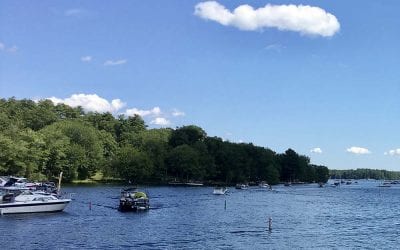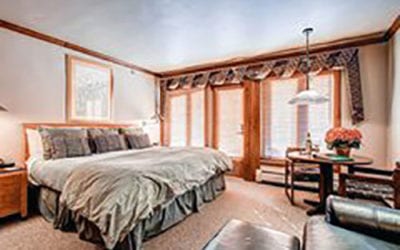When I told a friend I was going to Myrtle Beach, South Carolina, he asked if I was taking golf clubs. After I reminded him that I don’t play golf, he inquired, “So you’re going to relax on the beach, right?” Wrong!
Most of the 15 million or so people who visit the Myrtle Beach area each year do go to golf and soak up the sun. Not surprising, because the destination has over 100 excellent golf courses and is bordered by a 60-mile stretch of inviting soft sand beaches. As I discovered, it also has history-rich towns, reminders of southern plantation life and intriguing cultural tidbits, any of which alone would be reason enough to go there.
Myrtle Beach sits near the middle of the “Grand Strand, a name coined by a newspaper columnist to describe a dozen towns strung out along South Carolina’s Atlantic coastline. Each community has its own appeals and unique story to tell. Together they provide a something-for-everyone combination of things to do and see.
Myrtle Beach is the heart of the Grand Strand, with the greatest concentration of hotels, restaurants, shopping and nightlife. The action is centered along the 1.2-mile oceanfront boardwalk, much of which is lined by shops, fast food eateries and arcades. Overlooking the scene is the SkyWheel, a giant-sized ferris wheel which soars 187 into the air, with glass-enclosed gondola cars that provide a bird’s-eye view over the surroundings.


Pawley’s Island, several miles further north, became a pre-Civil War summer retreat for wealthy planters. Some of their homes are identified by markers that relate their history. The setting retains vestiges of the laid-back atmosphere that residents prefer, and refer to as “arrogantly shabby.”
In sharp contrast to Pawley’s Island is Murrell’s Inlet, which earns its reputation as the “Seafood Capital of South Carolina.” Fresh fish, crabs, oysters and clams are pulled from the surrounding waters, and fishing boats and pleasure craft keep the 1,400-foot-long boardwalk bustling. Aptly called the Marsh Walk, it overlooks salt water wetlands and provides glimpses of an outdoor aviary of pelicans, egrets and other migratory and resident birds.
Perched near the northern end of the Strand, Atlantic Beach has close ties to one of the more intriguing historical stories of the region. In the early 1930s, Atlantic Beach became a vacation destination for African-American families, and was called the “Black Pearl.” Many residents of that community, like those in other parts of the Grand Strand, are descendants of the Gullah-Geechee people who retain their unique and fascinating culture.
When early plantation owners realized that the area’s climate and “lowcountry” tidal rivers were perfect for growing rice, they instigated an influx of slaves from west African countries which were collectively known as “the rice coast,” where the crop had been grown for centuries. The Africans’ knowledge of rice cultivation was largely responsible for the success of planters in coastal regions of the southeast states.
Isolated at plantations and rural sea island communities that sprung up around them, the slaves developed a unique language and clung to their African cultural traditions more closely than those in other parts of the colonies. That distinction extended to their rituals, religious beliefs, arts and crafts, food and other facets of their lifestyle.
Many descendants of those slaves still live near where their ancestors did, in a narrow band stretching from the coastline of North Carolina to Florida, and about 30 miles inland. For reasons unknown, people in the northern section of this area are known as Gullah, while those further south are called Geechee.
In 2006, Congress passed a law establishing the Gullah Geechee Cultural Heritage Corridor, to recognize the important contributions to our country’s history and traditions of those people. Visitors to the Grand Strand are surrounded by reminders of this fascinating story, some of which are encountered in surprising places.
For example, a green on the golf course at the Barefoot Resort is nestled against the recreated ruins of a plantation home, and the Willowbrook course is laid out on land that once comprised two rice plantations. Another course was constructed on the site of a former plantation that included an early slave cemetery. That prompted the Gullah woman who pointed it out to me to remark, “My grandfather is buried under the 10th hole.”

The Lowcountry Trail, one of several that meander about the sprawling complex, leads past a restored rice field and the remains of several plantation buildings. Occasional programs are held to introduce visitors to various aspects of the Gullah-Geechee history and culture.


Observing farm workers busy at their chores, it’s easy to imagine yourself transported back in time. The land is tilled using mules pulling plows, crops are harvested by hand, and syrup and soap are made the time-consuming way they were over a century ago.
The sight of subsistence farmers toiling in fields is very different from stately plantation homes surrounded by lovely lawns and Spanish moss-draped oak trees. Occasional touches of honky tonk tourist attractions contrast sharply with a casual, laid-back island lifestyle to which traditionalists cling with a kind of stubborn pride. Throw in a dose of fascinating, little-known history and you have an idea of what awaits visitors to Myrtle Beach and the Grand Strand. Oh yes, there also are those stretches of broad sand beach and some 100 golf courses that may also be of interest.

After gallivanting throughout the United States and to more than 75 other countries around the world, and writing about what he sees, does and learns, Victor Block retains the travel bug. He firmly believes that travel is the best possible education, and claims he still has a lot to learn. He loves to explore new destinations and cultures, and his stories about them have won a number of writing awards.





